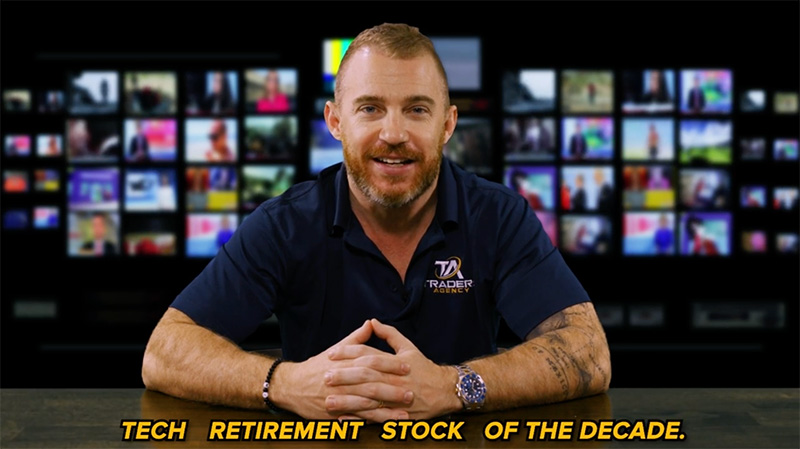Channels, channels, channels, channels everywhere. Hey everyone, I hope you enjoy this content. Don’t forget to click that subscribe button and hit that bell to be notified of upcoming videos. Hey everyone, Josh Martinez here with tradersagency.com and welcome to this week’s idea. Behind us is the E-mini Russell 2000, and with an E-mini contract every tick’s worth about $5 and with a micro contract every tick’s worth about 50 cents. Now believe it or not, we have nearly a 1000 plus tick opportunity here if we can get our setup, which could be worth over $5,000 with an E-mini contract or $500 with a micro, so it’s absolutely worth our time.
Let’s first draw out the concept.

So at the end of the day in trading it’s about pattern recognition. Now, some people find their patterns in economics fundamental systems indicators, it’s a if then approach, if the market does this then the market does that. And normally it’s based upon probabilities, and because there’s no such thing as 100% absolutes or guarantees, but at the end of the day, if you do something 10 times and it worked more than five times, more than half the times, you usually got something pretty good here. So normally what ends up happening is, when you see the market create these ranges, these boundaries, these boundaries what they end up doing is they help us determine what the market could do next. And there are some techniques that can increase the probability of that.

So for example, when or if the market comes near the bottom blue level, we buy it, take profit for the top level. Let it reload, buy it, buy low, profit high, buy low, profit high. Now, there’s no guarantees, right? This market if it wanted to it could find support, breakthrough and sell off, or support hold and then the market rallies. But ultimately what we’re trying to do, is we’re trying to say, “If the market U-turns, right? We want to buy it on the way up.” And that’s the opportunity that we have right here, we have it with the Russell 2000. And you can see the bottom blue level has U-turn the market one, two, three, four times successfully.
This has been an idea in the past for us, so we actually did it last month, buying low, profiting high. And then we have this top blue level where the market sells off. Now, right now we look at the current market. The market is moving from the top blue level to the bottom blue level. Now, will the market fall to the bottom blue level? I have no idea, I just don’t know, I don’t know, but if it does, I’m willing to buy it. And if the market does fall all the way down here, I want to try what’s called a counter-trend line. So what’s a counter-trend line? A counter-trend line basically means this, it’s exactly the way that sounds.
If we’re expecting this market to go up, right? And we’re here, and we’re saying, “Hey, whenever the market comes near this bottom blue level, the market traditionally U-turns on the way up.” Everybody says this, you hear it all over the internet, especially lately, people will say, “Buy the dip, buy the dip, buy the dip,” and then what happens? There was memes that come out and people would say, “I bought the dip and it kept on dipping,” so that can be very challenging. I don’t mean to laugh, it’s just, I’ve been there and any real trader has been there too.
And so what we ended up doing is, we want to buy the dip or we want to change the story a little bit. We want to buy the U-turn after the dip, let the market dip and then let it U-turn. And how do you know it’s U-turning? Well, you never really know, it’s just based on probability. When the market falls you bring in a blue line, and if the market closes above the blue line, the dip’s over with, you’re buying the U-turn. So if the market’s falling, you just bring into down blue lines, it’s called a counter-trend line, and it just means that, “Hey, we’re expecting the market to go up, and the reason why we expect the market to go up is because based upon probability the market normally goes up at, on, and or around the bottom blue level. And so we’re not going to buy the low prices because it’s low, we’re not going to buy the dip just because it’s dipping. What we are going to do is, we’re going to say when or if the market closes above the counter-trend line, we’ll buy it.”

And what that does is, it signifies that the short-term move is over and the extension is beginning. And when you can buy the U-turn right there, right here, or right here, what you’re doing is you’re buying right at the start of the U-turn. And when you can buy right at the start of the U-turn, you normally get to enjoy the extension and then you can use the top level to help take a profit. So buy low, profit high, buy low, profit high, buy low, profit high, buy low, profit high. And if we apply that to what we’re doing here, we need the market to fall, when or if the market comes near the bottom blue level, we bring on the counter-trend line break, take the ride up. That is 1,000 ticks of opportunity, it’s something that has worked literally one, two, three, four times already, it’s been doing it since basically January of 2021, this entire year, this is literally just number five and it could be a good opportunity.
So that’s this week’s idea, E-mini Russell 2000, let the market continue to fall, when or if the market does fall, we’ll bring in the counter-trend line break, we’ll look to buy in the way up. 1,000 ticks could be worth $5,000 or $500 with a micro contract. This is Josh Martinez and we’ll see you next week. Hey guys, if you enjoy this video and you want to stay up to date to my weekly content, go ahead and subscribe to this channel tradersagency.com. If you want to be notified every time I post a video, go ahead and click on that bell down below. If you want even more information, don’t forget to visit my website at tradersagency.com and subscribe to my free weekly newsletter, where I send out my research on market opportunities. Thank you for the opportunity, have a wonderful.





1 Comment
June 26, 2021 @ 2:43 am
Today June 25 I used Tunnel Trader L2 and S2 (I’m manually trading because Ninja Trader requires additional license fees for automated trading)
Between 5:00 am PDT and 13:00pm PDT I sold S2 and used the Blue Line as my identifier for false bounces or breaks. If it bounced and fell back below I kept the trade going. Did the same thing with L2.
M2K booked 4 trades (one micro contract) equaling 57.4 or $287 (if I’m correct in my calculation)
MNQ 3 trades (one micro contract) @ 136 or $272 (if my tick calculation is correct)
Note: still trying to figure out dollar loses or profits using those darn ticks!! Why did the make it so complicated??
Gold was better however I went to sleep at 11:00 pm PDT and closed out in the morning for about $290.00. The principle was the same. Sold at S2 single contract it hit blue line and bounced then fell back below and kept going.
Not sure this makes sense but I’m gaining confidence in this at this juncture in market behavior. of course I have no problem taking profit at the blue line if market behavior changes.
My point is the blue line can be used in other ways in identifying false bounces or breaks.
Sure would like to hear back from you on this comment…..